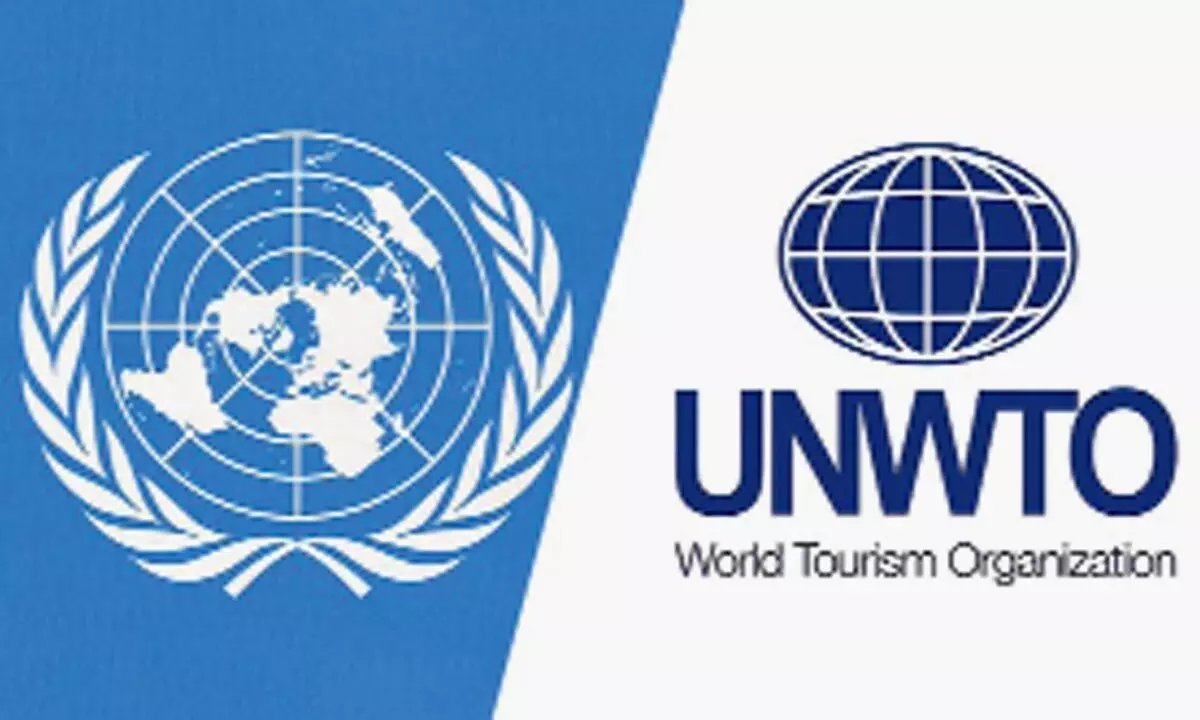Tourism industry needs to cash in on peoples’ ‘increased desire to travel’
Mountain and sports tourism has tremendous potential
image for illustrative purpose

The tourism source market is unable to establish a firm foothold in undeveloped nations with low-income inhabitants. This is mostly caused by a lack of infrastructural development, poor internet access, and rural areas. In addition, inadequate government funding, subpar transportation infrastructure and a lack of education are a few of the barriers to the tourism business. In effect, this limits the expansion of the world's tourist source market
The World Tourism Organization (UNWTO) is responsible for the promotion of sustainable and universally accessible tourism that geared towards achieving the universal 2030 Agenda for Sustainable Development and Sustainable Development Goals (SDGs).
The global tourism source market is anticipated to expand annually at a promising CAGR of about 3.86% during the projected period of 2023–2030, according to our research analyst.
The global tourism source market was estimated to generate around $2,003.68 billion in revenue in 2022, and it is projected to grow to $2,677.77 billion by 2030.
The expansion of the tourism source market would be boosted by the increasing number of tourism-related activities over the forecast period.
The demand for tourist services is projected to rise as a result of citizens' increased desire to travel both domestically and internationally and their increasing propensity to engage in leisure activities. The market is also being helped by outbound travel, westernisation, urbanisation and income growth in developing nations. The market is growing fast due to an increase in promotional efforts in the host market, and participation in social media and online channels.
Stabilisation of economies in developing nations and expansion of infrastructure along with population growth are the other key factors propelling the expansion of the world market for tourism-related products. Thus, these elements will contribute to a growth in the industry as well as expanding developments and technical advancements.
The tourism source market is unable to establish a firm foothold in undeveloped nations with low-income inhabitants. This is mostly caused by a lack of infrastructural development, poor internet access, and rural areas. In addition, inadequate government funding, subpar transportation infrastructure and a lack of education are a few of the barriers to the tourism business. In effect, this limits the expansion of the world's tourist source market.
For the tourism industry in low-income countries, a lack of adequate infrastructure remains a major issue. This involves, among other things, lodging facilities, connectivity to nearby cities, healthcare, and transportation. An incorrect budgetary allocation is the fundamental reason for this backwardness. Along with this, worries about safety and security and accessibility are also equally to blame for the tourism source industry's sluggish growth.
According to the United Nations, 54% of the world’s population in 2015 lived in urban areas and, by 2030 this share is expected to reach 60%. Along with other key pillars, tourism constitutes a central component in the economy, social life and the geography of many cities and is thus a key element in urban development policies.
Mountain tourism represents between nine and 16% of international tourist arrivals worldwide, translating to 195 to 375 million tourists for 2019 alone. However, the scarcity of domestic mountain tourism-related data makes it difficult, or even impossible, to assess the economic, social and environmental impacts of this important segment. The latest report aims to address this data gap.
With the right data, we can better control the dispersal of visitor flows, support adequate planning, improve knowledge on visitor patterns, build sustainable products in line with consumer needs, and create suitable policies that will foster sustainable development and make sure tourism activities benefit local communities.
Mountains are home to around 1.1 billion people, some of them among the poorest and most isolated in the world. At the same time, mountains have long drawn tourists interested in nature and open-air destinations and outdoors activities like walking, climbing and winter sports. They also attract visitors with their rich biodiversity and vibrant local cultures.
However, in 2019, the most recent year for which figures are available, the 10 most mountainous countries (in terms of average height above sea level) received only 8% of international tourist arrivals worldwide, the report "Understanding and Quantifying Mountain Tourism", shows.
Managed sustainably, mountain tourism has the potential to boost the income of local communities and help preserve their natural resources and culture. And, according to FAO, UNWTO and MP, measuring the volume of visitors to mountains represents the first vital step towards unlocking the potential of the sector.
Sports tourism is one of the fastest growing sectors in tourism. More and more tourists are interested in sport activities during their trips whether sports are the main objective of travel or not. Sport events of various kinds and sizes attract tourists as participants or spectators and destinations try to add local flavours to them to distinguish themselves and provide authentic local experiences.
Mega sport events such as Olympics and World Cup can be a catalyst for tourism development if successfully leveraged in terms of destination branding and infrastructure development.

